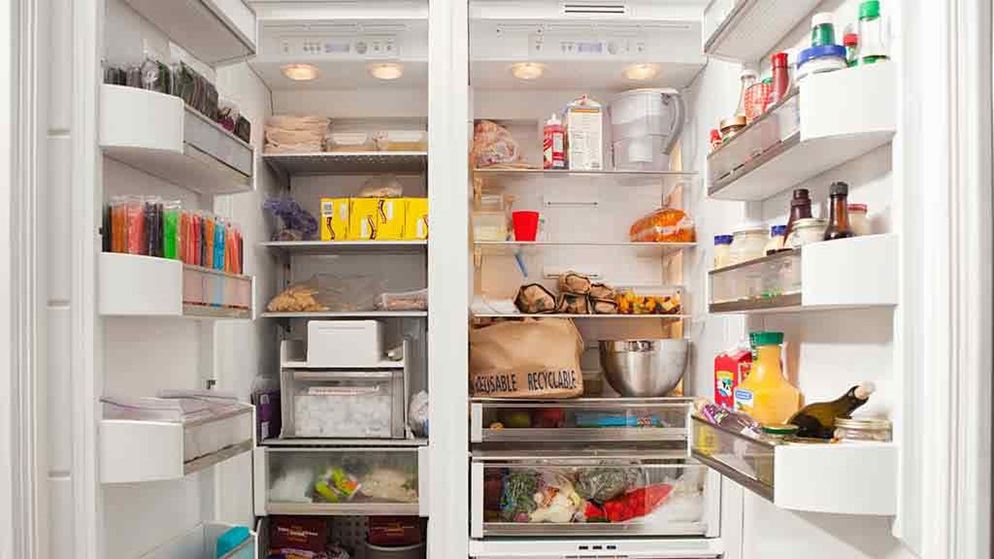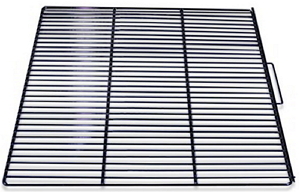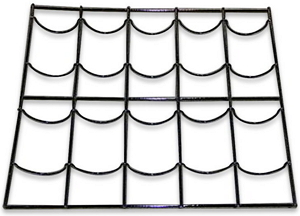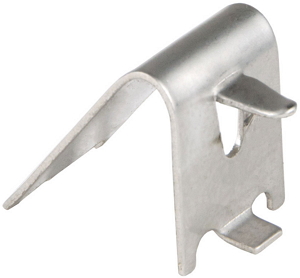Importance Of Organizing Your Commercial Refrigerator
Posted by CANDY POSA

Proper organization of your commercial fridge or freezer can help you maintain efficiency and safety as well as decrease food waste. Organizing items in your commercial refrigerator and freezer may not be the most exciting thing on your to-do list. After all, as a restaurant owner, chef or manager you have menus to create, supplies to order, and employees to schedule.
Refrigeration equipment should work well on its own, But it will work even better when the food inside is well organized. In fact, a poorly-arranged refrigerator may be working harder than it should. This can cause the compressor to wear out too quickly while overloading your utility bill in the process.
All commercial refrigerators and freezers require a systematic and organized approach to food storage organization. This applies to commercial refrigerators and freezers of all shapes and sizes. Depending on the size and setup, you will need to install additional interior shelves, pan rack slides, or even make use of dunnage racks.

Basic Health and Safety
As with all our tips, be sure to follow local health codes, and follow basic food safety principals to ensure that foods are kept as fresh and safe as possible.
With a few quick fixes in terms of organization, you can prevent hot spots, improve cleanliness, and maintain food safety in all your refrigeration equipment.
1. Space food items appropriately. When storing items in bulk, be sure there is adequate space between food boxes so cold air can circulate. Better circulation means better cooling results, and fewer “hot spots” inside. The same concept goes for prepped food items as well: pans of pre-made appetizers, containers of soup, or frozen desserts. Both in the refrigerator and in the freezer, keep three to six inches from each wall and between each food item for the best cold air circulation.
2. Keep items off the floor. Storing items at least six inches from the floor is a commandment in almost all commercial kitchens. This improves sanitation by preventing pest infestation and contact with dirty floors. Most commercial reach-ins have built-in shelves, but you may need to set up your own stationary shelving units or dunnage racks in a refrigerator.
3. Store meat items on the lowest shelves. As a food safety precaution, store meat on the lowest shelves of your commercial refrigerator. As meats thaw or marinate, faulty food storage containers or an accidental spill can contaminate other food product below the meat. If meat is on the bottom shelf, any spills will simply fall through to the floor, and thanks to those six inches, you can easily mop it up.
4. Store fresh produce away from the fans. Internal refrigerator fans can actually damage food items stored near it, like fresh greens or delicate fruits like berries. Fresh produce is susceptible to damage and should be stored as far from the fan vents as possible. Items in sealed containers will be more likely to maintain their integrity. In the freezer, storing food too close to the fan can result in freezer burn.
5. Follow the rule of FIFO. Pay attention to food product shelf-life and “use-by” dates. Put a date sticker on every product before putting it into the refrigerator, or simply mark it with a pen. Place the newest items on the back of every shelf. Slide older items forward. Any open items should be used first, as long as they are still fresh. Following this rule, known as first-in, first-out (FIFO), ensures proper product rotation for the freshest and safest inventory possible.
6. Label the shelves. Labeling the refrigerator shelves is a good way to ensure that employees can identify every product. This can help with storage and organization too, especially when stocking new inventory. Use shelf-labeling accessories to make this job easier.
Keeping your commercial refrigeration equipment well-organized helps your staff find what they need, maintains food safety, and improves your equipment’s longevity. Take the time to improve organization and enjoy longer life from your equipment and better food quality for your customers.
Reasons Why Organization Is Important:

- High-quality food is not cheap. Your storage plan maintains the integrity of everything you purchase so that it can be used and doesn’t go to waste.
- You avoid those dreaded health code violations by following organization guidelines. Improperly stored food is one reason your restaurant might be fined or even shut down.
- Utilizing your space effectively increases the quality of the food.
- Organization in your commercial kitchen creates a smooth operation. When your staff isn’t wasting time looking around for a specific food in an unorganized refrigerator, they can get back on the line quicker.

- Disorganization in your fridge and freezer makes these units work harder, which means you’ll need to call for repairs more often when your food isn’t cooling appropriately.
- There is less need for cleanup when shelves are organized. Food will have a place and things won’t be thrown in wherever it fits.
- Clean up is easier when shelves are organized.
- Ordering and restocking is easier when everything has a place. You can quickly see items that you need and won’t be looking for more cases in another place.
Commercial Refrigerator Shelving
Commercial refrigerators and freezers are called "cold storage" for a reason; while a lot of focus is put on the components that keep the cabinet cold, how the food is stored in the cabinet is just as important. Many buyers base their commercial refrigeration purchases on the cubic feet of storage available in the cabinet, but without proper organization, much of that space can go to waste. Below, we explain the different shelving and storage options available for commercial freezers and refrigerators to help you set up the perfect cold storage solution for your commercial kitchen.
Shelves and Shelf Alternatives
Most refrigerators and freezers come with a few wire shelves, but those may not be the best option for your kitchen, depending on what you'll be storing and how the refrigerator will be used. The following are the basic shelf options available from most manufacturers and the best uses for each.
Shelves

Wire shelves are the most common default option offered with refrigerators and freezers, but you may end up needing more than what’s provided or you may find that shelves of a different material will be more suitable for your application. Wire commercial refrigerator shelves are often made of steel and coated in PVC plastic or epoxy for durability and corrosion resistance, but more durable stainless steel and chrome wire shelves are also available.
While PVC and epoxy coatings shelves are protected from corrosion, those coverings can crack and flake over time, exposing the steel underneath to rust. Chrome and stainless steel shelves are more durable and able to withstand years in a commercial setting. Wire shelves can often be augmented with some of the shelf accessories detailed below. Glass shelves are also available, and are mostly used in merchandisers to improve the presentation.
Tray Slides

Tray slides - also called pan racks, bun tray racks, and universal slides - offer a way to store more food pans or sheet pans than shelves allow by providing a ledge or wire channel for the edge of a pan to slide on. These components may take the form of individual ledges that are installed on either side of the refrigerator interior or they may come as a one-piece rack assembly that can be slid into the cabinet. A full-size rack will sit on the floor of the refrigerator, while a half-size units can sit on the floor or on a shelf. Some slides are made to fit a specific pan size, while others can hold pans of varying sizes. Like wire shelves, stainless steel and epoxy-coated tray slides are available.
Wine Rack Shelves

Wine rack shelves are individual shelves made for holding bottles of wine in a commercial refrigerator. These are available in stainless steel, but because they are often used for displaying wine in a glass door merchandiser, black PVC-coated shelves are more popular. Most wine shelves are stationary in the refrigerator cabinet, but some are made on slides that allow the shelf to be pulled out to provide easier access to the wine stored there. These shelves are sometimes installed on an incline, with the back of the shelf raised to make the bottle labels more visible.
Shelf Accessories
These items are not used alone for storage but can be used with the wire shelves mentioned above to improve organization and merchandising.
Shelf Clips

Depending on the manufacturer, these may be called shelf clips, mounting clips, pins, clips, or shelf supports, but they all have the same job: keeping wire shelves securely mounted to the inside of the refrigerator. Because each clip has to be compatible with the refrigerator's interior design, each brand's shelf clip looks different from the other. Some are V-shaped with little protrusions on each end that insert into the support rack, while others are knob-shaped and screw into the side of the refrigerator. Depending on the manufacturer, clips may be made of plastic or stainless steel. They come with the initial refrigerator purchase, but can also be purchased separately to replace lost or damaged clips, or with subsequent shelf purchases.
Bottle Organizers

Commonly used in merchandisers, bottle organizers use plastic or metal dividers to create rows to keep bottles organized. These accessories are available in rows of different sizes to accommodate varying bottles. These shelves are often gravity-fed, tilted up to allow bottles to slide forward as the one in the front is removed. The front of the shelf has a barrier to keep the bottles from sliding out, and the back of the shelf is often open to allow for easy restocking in pass-through models. Some of these organizers are meant to be set on shelves, while others consist of a shelf with a built-in organizer.
Pricing Strips

Pricing strips are made to mount to the front of a wire shelf and hold paper or cardstock labels printed with product names and prices. While these accessories are most often used in merchandisers, they can also be used in back-of-house refrigerators to help label and organize each shelf's contents.
Novelty Baskets

Novelty baskets are made of wire and divided into two or more sections to allow for easy merchandising of refrigerated foods like fruit and frozen treats like ice pops and ice cream sandwiches. They can also be used in a commercial kitchen to organize small items on a refrigerator or freezer shelf, like produce or condiments. Because these baskets sit on the shelf, they do not have to be purchased to fit a specific unit as long as the basket will fit on the shelf you plan to use it on.
Looking for a Commercial Fridge?
T : 1300 885 693
E : info@ozcoolers.com.au
W : www.ozcoolers.com.au
